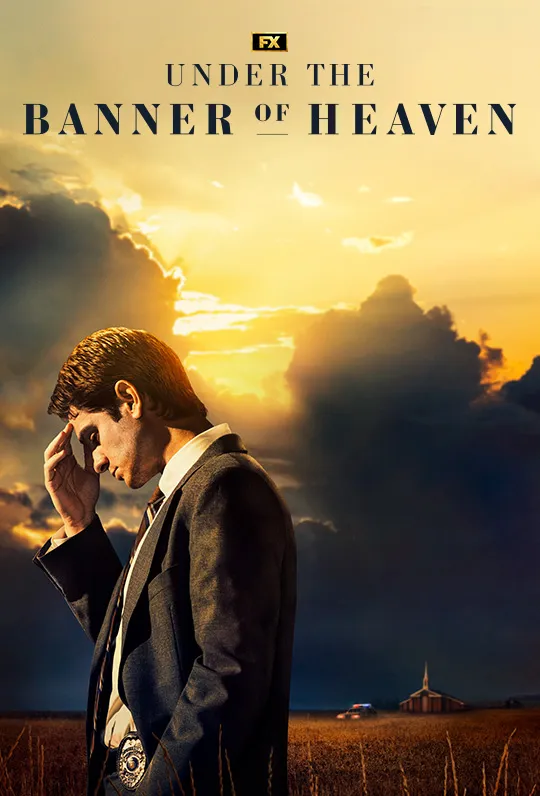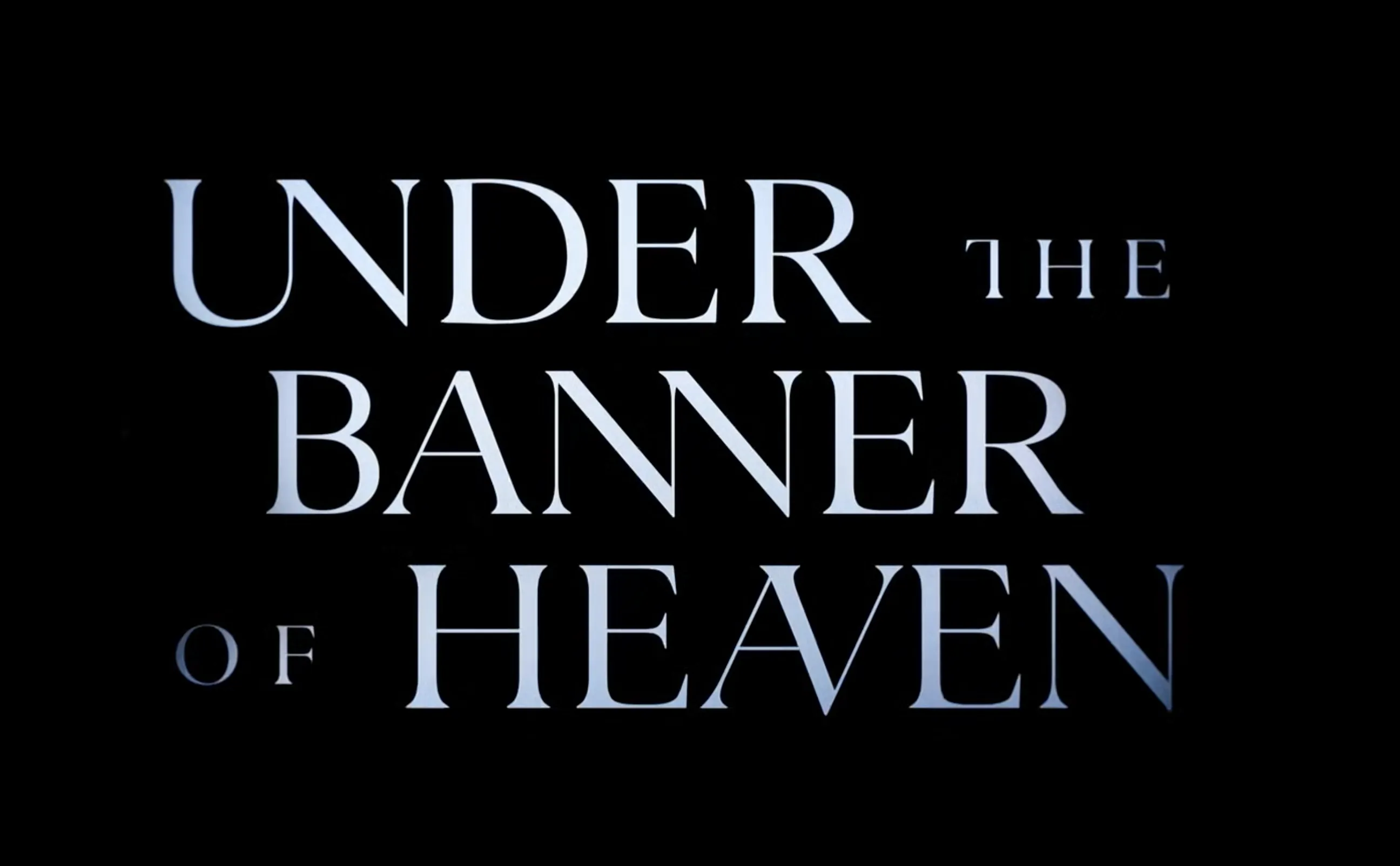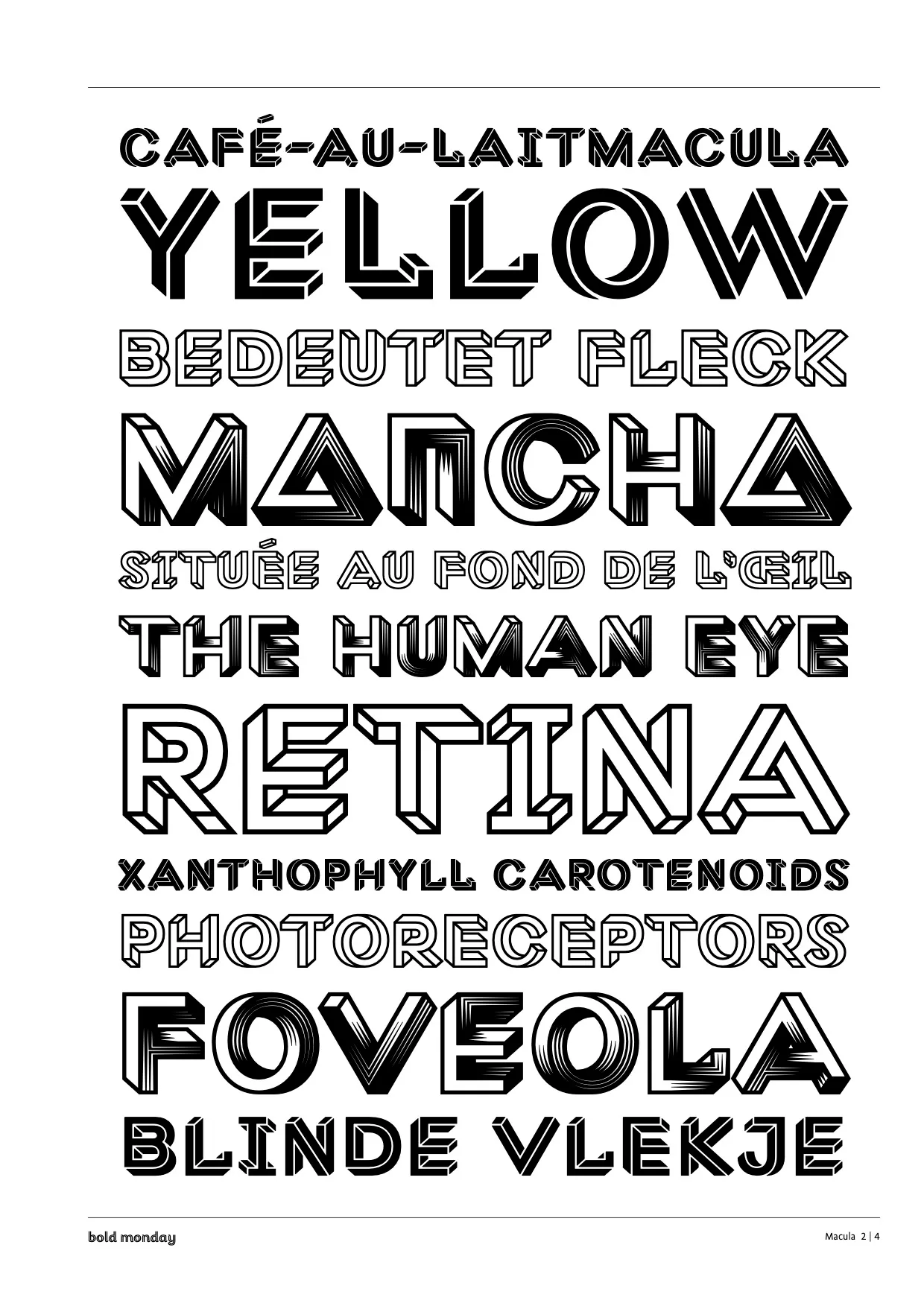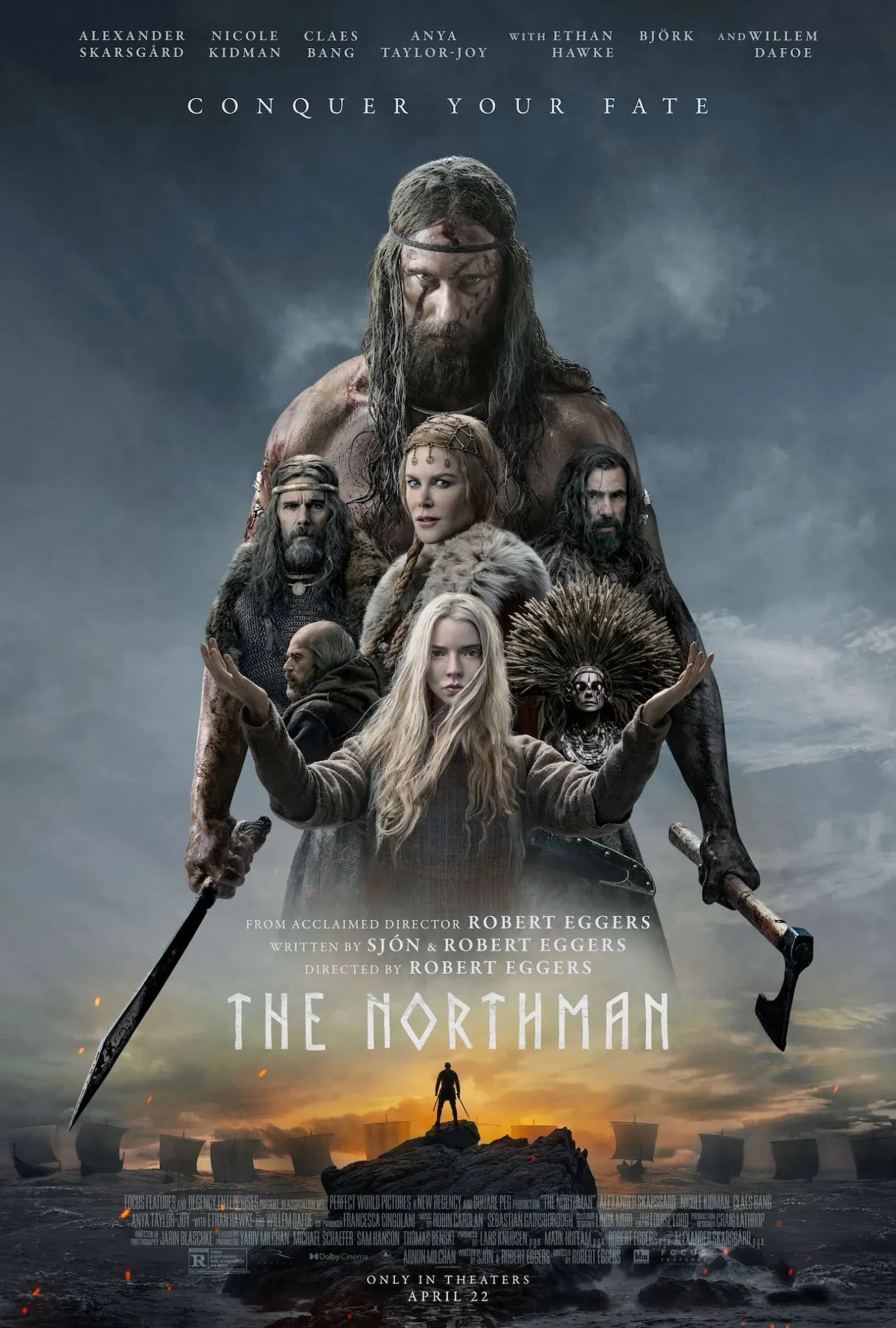In Defence of the Single Page Application
Trenchant, brilliant stuff by William Kennedy 💯
(Cached)
Trenchant, brilliant stuff by William Kennedy 💯
(Cached)
Via Wikipedia. I am “not able rightly to apprehend the kind of confusion of ideas that could provoke” the genesis of other styles. “Haskell Style” has to be a joke (like this masterpiece) and I just pray I don’t encounter it in the wild1 🙏
// Allman
while (x === y)
{
func1();
func2();
}
// Horstmann
while (x === y)
{ func1();
func2();
}
// Kernighan & Ritchie
while (x === y) {
func1();
func2();
}
// GNU
while (x === y)
{
func1();
func2();
}
// Haskell style
while (x === y)
{ func1()
; func2()
;
}
// Ratliff style
while (x === y) {
func1();
func2();
}
// Whitesmiths
while (x === y)
{
func1();
func2();
}
// Lisp style
while (x === y)
{ func1();
func2(); }
See also: “Vertical Hanging Indent” is the One True Indentation Style
Update: Not exactly HS but good grief.↩︎
If you liked that, you might like this longer documentary called “Being Poirot” by Suchet himself.
They look like priceless brooches and are tremendously important to our planet.

Emphases mine:
Living diatoms make up a significant portion of the Earth’s biomass: they generate about 20 to 50 percent of the oxygen produced on the planet each year, take in over 6.7 billion metric tons of silicon each year from the waters in which they live, and constitute nearly half of the organic material found in the oceans. The shells of dead diatoms can reach as much as a half-mile (800 m) deep on the ocean floor, and the entire Amazon basin is fertilized annually by 27 million tons of diatom shell dust transported by transatlantic winds from the African Sahara, much of it from the Bodélé Depression, which was once made up of a system of fresh-water lakes.
Was doing some digital house-keeping and came by a cached copy of that by MisterBG. Things haven’t changed too much over the past two decades…
Molly White asks if Web3 is bullshit. Short and excellent talk.

Decent background-watch. Whoever did the ‘visions’ knocked it out of the park. A waste of Anthony Hopkins and Colin Farrell, who play clairvoyants whose powers wax and wane in service of the utterly predictable plot. Like Next1 but slightly better.
Which is a fantastic fucking movie if you love Mr. Cage as sincerely and as much as I do.↩︎
When he was young he had prided himself on being clever. Walking down the street, not even thinking anything, just walking along like every other moron, he’d had a distinct sense of how clever he was. He’d never done anything with that cleverness except write stupid articles and make occasionally clever remarks, most of them not even clever. He just felt clever, and it was a good feeling, feeling clever. Now he felt, with equal conviction (and rather more evidence), that he was entering the stupid years. The stupid years complemented the vague years. They went together. The vague years and the stupid years were the same years and they had already started. Well, bring them on. Forgetting everyone’s names - as those adverts in the newspapers were always reminding you - was embarrassing, but apart from that, being stupid was fine, like a premonition of enlightenment.
Be a Kermit the Frog. Have a creative vision and no ego. Recognize the unique talents of those around you. Attract weirdos. Manage chaos. Show kindness. Be sincere.
People ask me why in 2023 I’m still rocking a mullet. Easy answer. Without the lettuce I’m just a guy that says dumb shit all the time. When I say dumb shit with the mullet, it’s like my face is saying one thing out front, and my mullet is apologizing out back. My mullet is “Dumb shit out front, I’m sorry but I grew up in Oklahoma out back” Getting mad at something someone said with a mullet is like getting mad at a person with no arms for not waving at you at the mall.
Spent a decent portion of my professional life with init.d. Had to deploy a set of Ubuntu servers last week (use FreeBSD at home), which marked my first actual brush with systemd after a long while of sysadmin-ing Linux systems. It’s weird, takes some getting used to, and has a lovely Enterprise™ smell to it1, but I don’t think I mind it too much, especially with a nice cheatsheet. Just ergonomics; no comments on its security and stewardship 🤐
I wanted to know more about it’s history and enjoyed this really excellent talk by Benno Rice. Had no idea that its creator received death threats and various other forms of online abuse over an innocuous set of ideas and piece of software. Unbelievable.
Some select quotes from the talk and about systemd:
People have a complicated relationship with change. I like to say that nerds especially have a really complicated relationship with change. We love it to pieces. Change is awesome when we’re the ones doing it.
The moral isn’t “Don’t use systemd”, the moral is “Write stuff in better languages than C”. rsyslog doesn’t exactly have an enviable security record either.
and finally,
The moral is “Don’t use systemd. And don’t chain core system functionality to software from teams with a track record of imcompetence.” It’s about better, experienced programmers. Not “better” languages.
Word.
I imagine that init.d did too when it was introduced.↩︎

Saw with LD. Stylish, great cinematography, good dose of Russell Crowe’s gravitas, and plenty of wealth-porn1 (and gratuitous art history lessons). Huge build-up of suspense (a la “Clue” or “Orient Express”) with a lame resolution towards the end.
Oh and RZA’s in this movie. I continue to be delighted by the random stuff he decides to show up in.
There’s a scene where Russell Crowe opens a case containing at least $2M+ in watches and swaps a Panda Rolex on his wrist for a 5711 (or something like it with a few nice complications). Even though it’s very well-established that our protagonist is a man of means, this scene is absolutely essential to the story being told because… 🤷♂️🖕↩︎
Definitely the future of television I had in mind was me having to google every movie I want to watch to see if it’s currently in one of its one-month windows on any of the seven streaming services I pay for. This is way easier than buying a DVD. I love it.
These are fossilized crinoids found in Western Australia by Tom Kapitany. Crinoids are animals and belong to the phylum Eichinodermata which includes starfish and sea urchins (and they all have “pentameral symmetry”). This is all well and good but these things, in their fossilized state, look like so much like the sentinels from The Matrix I wonder if there was any inspiration here.


Here are a few more fossils


Source: Fossil Huntress
And their basic anatomy

And because no good deed goes unpunished,
Fletcher claimed to have been harassed by his own community and he also found bullet holes in his barn. Fletcher used the proceeds from farming the land to pay the taxes for the interned Japanese. From 1942 to 1945 he managed the Tsukamoto, Nitta, and Okamoto farms. Fletcher’s wife Teressa Cassieri also worked the farms.
But because he was a good decent human being,
The agreement was for Fletcher to keep profits after paying the taxes on the farms, but instead he returned the money to the Japanese farmers when they were released.
From a New York Times profile (cached):
For the next three years he worked a total of 90 acres on three farms — he had also decided to run Mr. Tsukamoto’s farm. He worked 18-hour days and lived in the bunkhouse Mr. Tsukamoto had reserved for migrant workers. He paid the bills of all three families — the Tsukamotos, the Okamotos and the Nittas. He kept only half of the profits.
Many Japanese-American families lost property while they were in the camps because they could not pay their bills. Most in the Florin area moved elsewhere after the war. When the Tsukamotos returned in 1945, they found that Mr. Fletcher had left them money in the bank and that his new wife, Teresa, had cleaned the Tsukamotos’ house in preparation for their return. She had chosen to join her husband in the bunkhouse instead of accepting the Tsukamotos’ offer to live in the family’s house.
The mensch lived to the ripe old age of 101 🙏 🙌 Here’s a photograph.

Source: The New York Times
This is the Patek Philippe 5131. It’s a world-timer with an intricate and lovely, hand-painted cloisonné enamel dial, and is a marvel of engineering and ingenuity from one of the Holy Trinity of watchmaking that will set you back at least $150,000 if you’re lucky1.
It also features one of the shittiest choices of typeface I’ve seen on a watch of its calibre (heh).

.
.
.
I wonder what the design process was at this august company when it came to this watch’s dial. It would appear that someone at Patek fired up Microsoft Word under “whooshing deadline” duress and, at the last minute, just said fuck it and picked the very unusual easy classy majesty that is the SHOUTING VARIANT of Lucida Calligraphy. The overall effect is one where you wonder if you’re looking at a bloody knockoff.

.
.
.
I like to imagine they received feedback over this ‘bold’ choice since here’s the next version, the 5231, on the right with its utterly hideous older brother on the left.

Source: Revolution Watch
I got that comparison from this exhaustive history of Patek’s World Timers. It’s well-researched, has a lot of pictures, and is a good read if you can withstand and forgive sentences like this written by the same bro who will definitely not teach you anything about after-dinner drinks.
As if, somehow, by losing myself in the beautifully rendered map of the Americas, Africa and Europe, I could remember how interconnected this world once was and hopefully will be again. So, I began to see my World Timer as a chalice of renewed hope to once more live the glorious opiatic maelstrom of transcontinental travel, even if for the time being this is limited only to my imagination as I write these words.
Opiatic. Wow. Cool man.
If you’re new to the world of watches, this is a very reasonable price for a piece like this. Consider this Rafa Nadal-endorsed Richard Mille (RM 27-04) that costs well over $2.5M (here’s why). It is, again, a legit wonder of engineering/watchmaking. Accuracy is another story: as far as time-telling goes, the absolute legend, the GOAT that is the Casio F91W ($10 or less) than any Patek or Mille you can buy. It will withstand “12,000 g’s” and last more than a decade on its battery. I maintain that this is what a watch-lover should start their collection with (followed by a Hamilton but that’s another rant).↩︎
This was rather vertigo inducing.

And this one, a photo, wasn’t as vertigo inducing as it was depressing.

Royalty-free image. Photographer unknown.
Things are going well with the Metaverse:
In a follow-up memo dated September 30th, [Vishal] Shah1 said that employees still weren’t using Horizon enough, writing that a plan was being made to “hold managers accountable” for having their teams use Horizon at least once a week. “Everyone in this organization should make it their mission to fall in love with Horizon Worlds. You can’t do that without using it. Get in there. Organize times to do it with your colleagues or friends, in both internal builds but also the public build so you can interact with our community.”
He went on to call out specific issues with Horizon, writing that “our onboarding experience is confusing and frustrating for users” and that the team needed to “introduce new users to top-notch worlds that will ensure their first visit is a success.”
Shah said the teams working on Horizon needed to collaborate better together and expect more changes to come. “Today, we are not operating with enough flexibility,” his memo reads. “I want to be clear on this point. We are working on a product that has not found product market fit. If you are on Horizon, I need you to fully embrace ambiguity and change.”
I’m assuming that asking “What the fuck are we spending $70 billion on again?” wouldn’t be a recommended way to embrace ambiguity.
Update
Kate Duffy with Business Insider:
Zuckerberg told employees this year to have their meetings on Meta’s Horizon Workrooms app, where people can come together as avatars in virtual workspaces, a person familiar with the matter told The Times.
[…] The source, who remained anonymous, told The Times that many Meta employees didn’t have VR headsets this year or hadn’t gotten around to setting them up. Those staff then had to rush to purchase headsets and register them before their managers realized, the source told The Times.
And the kicker:
Included in the Times report was inside information from two employees who told the newspaper that some workers call important metaverse projects “make Mark happy,” abbreviating it to “MMH.”
Won’t someone think of our mad king? I’m going to return to the office only to be forced to attend meetings virtually. MMH 🥲
Update

VP Metaverse (at Meta, that is. I don’t know how governance works in the Metaverse).↩︎
A theater-owner on Telugu moviegoers at RRR:
This fucking shit destroyed my theater opening night. The Telugu crowd specifically wrecked out shit. No issues with the Hindi dub or the Tamil dub.
Confetti cannons, spraying soda everywhere, littering in the parking lot, sneaking in more people than there were seats in our biggest auditoriums, screaming and shouting and chanting constantly.
I get the guy is something of a hero. I get you’re excited for your long awaited movie or whatever. Here’s an interesting thought thought: fuck off. :) Just fuck right off. Don’t be an animal and make my and my employees lives worse to have more fun at our expense.
The janitors saw the insane amount of glitter and newspaper shreddings and confetti explosions and said “hm, actually, second thought, fuck this. Nobody gets paid enough for this.” In-between every seat, every chair, in every row and even where there weren’t rows of seats, on every step, even up by the projector window. We’re lucky they didn’t damage the silver screen in any way, tbh, but that’s about it. Took days to fully clean.
Fuck RRR specifically for this reason. I know it’s probably decent, and a few friends watched it on Netflix, but out of sheer principle I just can’t bring myself to watch even a second of it now. There were some fun scenes for sure, but I think I’d much rather watch War or Baahubali 1 and 2 than RRR on account of the bad time everyone but the Telugu crowd had.
With the usual “not all of us” apologies from other Telugu folk of course.
I have never, ever understood this deeply embarrassing behaviour from my people1. At college, I remember watching a Chiranjeevi movie at some small town in Iowa. The poor folk who ran the theater had no idea what they were in for. Moviegoers littered the entire theater with glitter and torn newspaper and didn’t clean up after the show was done. Some set up an unsanctioned tea and snack station for the intermission (these refreshments were, of course, offered at a price). Chanted, chatted loudly, and generally made a nuisance of themselves.
I’ve been offered quite a few reasons as to why Telugu folk do this and they’re all pretty bullshit. I personally refuse to go to the first screening of any Telugu movie in Des Moines in case I have to deal with “passionate” people who don’t seem to understand that they’re rude, ill-mannered, immature, and annoying pieces of shit to everyone else around them.
Those are things I could find in a few seconds for the recent release of a terrible movie.↩︎
I feel very personally attacked by Mr. Lovenstein. And somehow glad I’m not the only person who, for instance, purchases a glorious WaterRower1 and proceeds to give it a thousand cumulative and approximate ‘pulls’ over three years. 🤦♀️

Because he saw it in House of Cards and thought it looked sick.↩︎
About five minutes in, I felt like I was reading a masterpiece even though I know very little about the graphic novel format. This is some mesmerizing inking (Burns won a lot of “Best Inker” awards for this work). The panels almost look like woodcuts. It’s about teenagers and adolescence and how we see our bodies during those important formative years, as simultaneously beautiful and grotesque. The world of Black Hole is bleak, boring, and pretty horrifying. And we’re talking moody teenagers so you get to witness a lot of terrible decisions, angst, ennui, despair, friendship, love, sex, camaraderie, depression, grief, humor, violence, acceptance, and hope in a very short span of pages. Lots of yonic imagery. The author published this over a ten-year period starting in 1995 and it looks like these are almost exclusively what he worked on during that timespan. Amazing.



Saw with LD. Very heavy subject matter loosely inspired by harrowing real-life cases and I skipped watching a few scenes. Sai Pallavi was intense and excellent, of course, but we were very impressed with the raw vulnerability and menace Saravanan brought to his character (also called “Saravanan”, lol). Kaali Venkat was great too.
S Sudha deserves a special mention both for her austere performance and who she is:
One of the places where the movie hits it out of the park is the casting of S Sudha, a transgender person, as a transgender judge in the movie. One of the fewest and rarest moments in Tamil cinema in which a transgender woman is shown to be in a position of power and authority. When she asserted her identity and agency in her reply to the misogyny of the Public Prosecutor (Kavithalaya Krishnan), the audience in the Chennai theatre erupted in applause, signaling a positive change in society.
What is the difference between ethics and morality? A morality functions according to principle, while an ethics functions according to experimentation. A morality presupposes a discontinuity between principle and action, while an ethics presupposes a continuity of action and character. A morality tells one what one ought to do, while an ethics asks what one might do.
According to Britannica, most of us tend to use the terms interchangeably, and we tend to associate “ethical” behaviour with professions (like law, medicine, and engineering).
Ethicists today, however, use the terms interchangeably. If they do want to differentiate morality from ethics, the onus is on the ethicist to state the definitions of both terms. Ultimately, the distinction between the two is as substantial as a line drawn in the sand.
The way I understand it is: We mostly agree that gay marriage is ethical. However, it may be immoral to an adherent of a religion that proscribes it (but would they agree that it is ethical?)
Not really. Reminded me of that Transformer when I saw this macrophotograph of a Longhorn Beetle.

Just amazing. Via and TD.
What makes life worth living? No child asks itself that question. To children life is self-evident. Life goes without saying: whether it is good or bad makes no difference. This is because children don’t see the world, don’t observe the world, don’t contemplate the world, but are so deeply immersed in the world that they don’t distinguish between it and their own selves. Not until that happens, until a distance appears between what they are and what the world is, does the question arise: what makes life worth living?
Coached by a former Wall Street bond trader who studied the opposition and set up a pipeline that produces Superstar Mathletes:
“You wouldn’t grab a kid in ninth grade who’s never played football and expect him to be a great high-school football player,” he said. “For most of these kids, this is their football.”
Mr. Frazer’s insight was to connect four levels of education: The kids he scouts in elementary school develop in middle school, compete in high school and take specialized classes from college professors that he brings to Buchholz’s campus. As soon as the system was in place, the team started winning and never stopped.
It turned out there was value in putting a bunch of smart kids in the same room: They feel empowered to make each other smarter.
Many of the gifted kids in his program have parents who work at the nearby University of Florida and push to get on Mr. Frazer’s radar. Others he finds on his own. He tracks down test scores of students in his district, follows the data and recruits high achievers. Some who were discovered by his spreadsheets have since graduated from the Massachusetts Institute of Technology with math degrees and landed on Wall Street themselves.
The mathletes who try out for the team and make the cut are combined into one class section and fly through competitive algebra, geometry and calculus during the school day. Mr. Frazer essentially bends the rules to move faster through harder material and pack more than two years of math into one school year. “I cover everything the state wants me to cover,” he said. “But there is no restriction on covering extra material.”

Disturbing fictionalization of a real-life tragedy (cached). Based on a book by Jon Krakauer. Andrew Garfield is simply excellent as a devout Mormon, dogged detective, and patriarch (“priesthood holder”) of his family.
Features some quick lessons in the History of the LDS which was not very flattering to the Church. Characters say “I’ve had a revelation” a lot before proceeding to perform all manner of shitty deeds. It’s a meditation over common-sense and rationality, spiritual doubt and loss, and the unbridled power that most religions impress into the hands of men by upholding and sanctifying patriarchy.
It’s all bleak, awful stuff. Moreso when even the heroic Pyre engages in it, which is exactly the point. Under the Banner of Heaven illustrates how no one who grows up in this kind of environment can escape its influences — no matter how kind, progressive, or loving they think they are. That’s why it’s so jarring when Pyre transforms — from the man who says, “I love you,” during every phone call with his wife, Rebecca (Adelaide Clemens); tucks his daughters into bed each night; and gently invites his dementia-addled mother, Josie (Sandra Seacat), on daily walks — into a domineering “priesthood holder.” The decisions he makes as the family’s religious authority are ostensibly to protect his family from the doctrine he’s beginning to interrogate, but he still uses its male-exalting infrastructure to get what he wants.
Each episode would start with one of the most beautiful title cards I’ve seen for a show:

They should give this young actor an Emmy for the few minutes she’s on screen 💯
Came recommended by HU. I had to borrow them from PG1. A limited, 7-part comic book series based on one of my favorite movies. Told from the perspective of John Doe and provides his backstory which is about as sad and disturbing as you can imagine it would be. About as gory as the movie itself. Most parts have a different style. Plenty of out-of-context Bible quotes. Just really well-executed.
These are hard to find and expensive: anywhere from $250 on eBay to $350 on Amazon.↩︎
You predict (or have insider information) that the price of lawnmowers will fall. The current market price of a lawnmower is $1,000. You go to Eddie’s Lawnmower Rental Company and rent a lawnmower from Eddie for $10 a day. He doesn’t care about you returning the same lawnmower; he just wants you to return a lawnmower (assume that all lawnmowers involved in this story are in great working condition).
You sell this lawnmower to your neighbour for $1,000.
Ten days later, and as you predicted, the price of lawnmowers falls to $500. Now you buy another lawnmower for $500 and return a lawnmower to Eddie. So now you have gained: $1,000 - ($10 x 10 days = $100) - ($500 on the lawnmower you bought) = $400.
Now say you made a bad prediction and the price of lawnmowers went up to $1,500. So now you have lost $1,000 - ($10 x 10 days = $100) - ($1,500 on the lawnmower you bought) = $600.
Theoretically, there is no bottom to your losses. So you have to be very careful when you short things. It’s not for everyone. Stick to Index Funds if you don’t understand what you’re doing.
Finally, here’s some discussion on where the expression ‘going short’ may have come from.
Macula is an absolutely lovely typeface by Jacques Le Bailly.

It reminded me of Impossible Type by Fleta Selmani.

I also found out that Eric Demaine has an “Impossible Folding Font”.

Jira is middle-management-ware, a term I made up for software that serves the needs of middle management, or, at least, the needs middle management thinks it has, which comes to the same thing as long as you’re selling to them. (link)
Jira is a tire fire. It should be condemned and officially designated a superfund site. My goddamn ticket tracker shouldn’t spin up my fans when I try to do something as austere as access the backlog, but, as we all know, it’s impossible to display tickets withou 21 MB of JavaScript and 164 HTTP requests. (Yes, those are real numbers.) (link)
and finally,
JIRA makes it dangerously easy to implement overly bureaucratic processes. A certain kind of organization is drawn to it for that reason. Even a healthy organization switching to JIRA can get carried away with the tools now at its disposal. JIRA is a software product but also a social institution, an organizational philosophy. Sure, you can have the software without the attitude or vice versa, but use of JIRA is still a (weak) negative signal about the quality of an employer.
Turns out that the main thing protecting employee autonomy is the logistical difficulty of micromanagement. JIRA “solves” that problem. (link)
For day-to-day things, a 10-year old MacBook Air is perfectly adequate (except, maybe, if you’re trying to read an article on the Des Moines Register’s or KCCI’s websites without using a PiHole…)
Didn’t realize it was a four-parter. Major nostalgia. Have forgotten most of my French but I somehow still remember a lot of words for things (and their gender!) thanks to these books (well, Volume 1 at least). Looks like the CBSE still uses it. Here’s audio to accompany the books.
I know nothing of D&D, wanted to find out more after watching the latest season of Stranger Things, and came by this video. I still don’t understand how the figurines contribute to the gameplay but was amazed by his vast collection of them. Lots of lovely passion and camaraderie here ♥️
Amil Niazi in a sobering article about ambition, COVID, women, mothers, and late-stage capitalism.
Think jq but for HTML/DOM. If you wanted to get all the post titles on this log,
curl -s -o - https://log.nikhil.io/ | gunzip - | pup "header > h2 > a" text{}
Lovely stuff.

Saw with LD. Revenge flick set in Scandinavia in 895 AD. LD thought that the ultraviolence was a bit gratuitous and didn’t serve the plot very well. I don’t know what one would expect from a story about a beefy Viking beserker hell-bent on revenge. Lush, beautiful, amazing visuals from Eggers and crew. I wish I saw this in the theater. This is Eggers’ third movie after The Lighthouse (which we thoroughly enjoyed) and The Witch (which I am too much of a chicken to watch). Alexander Skarsgård and Anya Taylor-Joy were excellent.
It’s hosted by three University of Iowa engineers and scientists who are tired of “cropaganda” and is rather entertaining. The latest episode calls the recent E15 Law a “Fart in a Hurricane”.
One of the hosts is an engineer named Chris Jones who also writes a very lively blog with wonderful nuggets like this:
[…] corn ethanol for fuel is stupid. The industry exists by virtue of one reason and one reason only: government policy. The environmental benefits of using corn to produce a liquid biofuel HAVE ALWAYS been more desperation-half-court-heave than slam dunk, it’s lower potential energy when compared to gasoline makes the 10% blend number an obvious head fake, and its dominance of American politics has kept higher energy players sitting at the end of the bench. So why does ethanol get its ticket punched to the Big Dance year after year after year? Politics. Liberal politicians from Joe Biden to Amy Klobuchar to Dick Durban to Sherrod Brown to Cindy Axne to the Iowa City dogcatcher provide all the cover Republicans in general and Iowa Democratic state legislators in particular need to continue force feeding us this rancid cod liver oil until kingdom come.
See also: “Iowa is Addicted to Cornography”

I can stare at photographs of the Nefertiti Bust all day. It’s just so alive. It was carved out of limestone and covered in stucco/plaster. The eyes were made out of quartz and affixed with beeswax. Just so beautiful. Wikipedia has a 3D model you can look at.
Indecision has been a pretty huge problem in my life and this comment by /u/tomwaste hit home.
I’m not sure if people have experienced the same but when I entered my 30s I became convinced I was rapidly running out of time. Rather than using that as motivation I let it paralyze me with indecision because I “couldn’t afford to make the wrong choice.” Consequently, I’m now 39 and, though I’ve had great things happen in my 30s, I regret spending so much time worrying and so little time committing to a course of action.
What’s the simplest way out of this mire of Analysis Paralysis?
“One day Alice came to a fork in the road and saw a Cheshire cat in a tree. ‘Which road do I take?’ she asked. ‘Where do you want to go?’ was his response. ‘I don’t know,’ Alice answered. ‘Then,’ said the cat, ‘it doesn’t matter.”
Their comment also reminded me of this Sylvia Plath poem illustrated by Gavin Aung Than of Zen Pencils.

This is Zephyr, a “captive-born gray wolf” at the Wolf Conservation Center in NY. Below, you can hear him and his friends orchestrate some of the most beautiful sounds you will hear today. I’ve watched this five times and it was somehow even better with my eyes closed.
Here’s the Wolf Conservation Center’s YouTube channel for more music. Fuck I love wolves ♥️🐺
Simple, consistent, SVG, adjustable stroke-width, and there are 1900 of them (and counting).